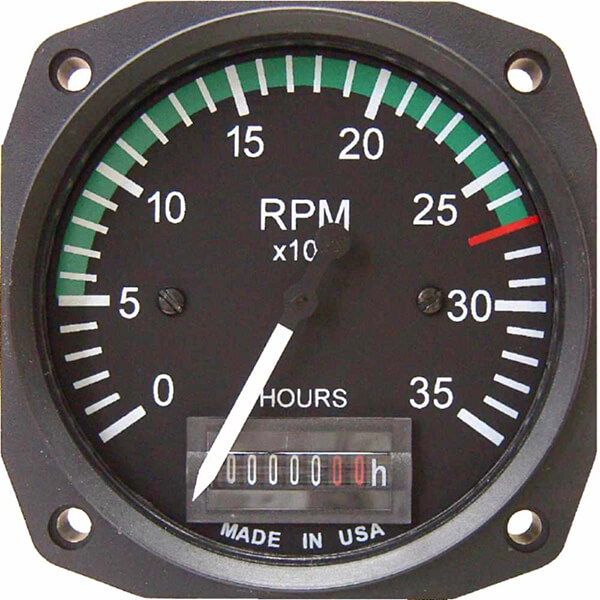The Importance of a Tachometer in Checking Engine Rate and Performance in Automotive Applications
In the world of automobile design, the tachometer stands as a critical tool in the vehicle driver's arsenal, giving a straight home window into the inner workings of an automobile's engine. Past its feature as a mere gauge of revolutions per min (RPM), the tachometer functions as a crucial tool for enthusiasts and professionals alike, using real-time understandings into engine efficiency and health and wellness. Recognizing the value of this gadget surpasses surface-level observations, delving into the intricate partnership in between engine rate, power outcome, and general driving experience. As we explore the complex duty of the tachometer in auto applications, a deeper gratitude for its effect on lorry dynamics and effectiveness begins to emerge.
Importance of Keeping Track Of Engine RPM
Keeping track of engine RPM, or changes per min, is an important facet of automotive upkeep and efficiency evaluation. Engine RPM straight correlates with the rate at which the engine's crankshaft turns, showing just how swiftly the engine is running.
Additionally, monitoring engine RPM is necessary for efficiency assessment in racing and high-performance automobiles. Preserving ideal RPM degrees is crucial for attaining peak power output and velocity. Racers usually make use of tachometers to ensure they are running within the perfect RPM range for optimum performance. In summary, checking engine RPM is not just crucial for finding problems but likewise for optimizing engine performance in different automobile applications.

Advantages of Real-Time Information
In automotive applications, real-time data plays an important role in giving immediate insights right into the efficiency and condition of the lorry. By continuously monitoring different specifications such as engine rate, temperature level, fuel intake, and a lot more, real-time data offers many benefits that add to improved effectiveness and safety on the road.
Additionally, real-time data helps with efficiency optimization by providing immediate responses on driving behaviors and engine performance. Vehicle drivers can change their actions in real-time based on this info to attain better fuel economic situation and extend the life-span of their car.

In addition, real-time data plays a vital duty in contemporary automobile diagnostics, enabling technicians to swiftly diagnose you can try this out and resolve breakdowns. This causes reduced downtime, reduced maintenance expenses, and inevitably, enhanced general car dependability and durability (tachometer). By harnessing the power of real-time information, automobile stakeholders can make educated choices that positively impact both the performance and long life of the automobile
Effect On Gear Shifts
Reliable gear helpful resources shifts in automotive applications considerably influence total efficiency and driving experience. The tachometer plays a vital role in optimizing equipment shifts by supplying real-time engine speed information to the vehicle driver. When approaching the redline on the tachometer, it signifies the vehicle driver to upshift to avoid over-revving the engine and causing prospective damage. On the other hand, downshifting at the best moment can help maintain the engine in its power band, guaranteeing responsive acceleration when needed.
Moreover, the tachometer help in attaining smoother gear transitions, particularly in hand-operated transmissions. By monitoring engine rate, motorists can perform gear changes at the optimum RPM variety, minimizing jerking motions and decreasing endure the transmission elements. This precision in equipment modifications not only enhances driving convenience yet likewise adds to fuel effectiveness.
Enhancing Fuel Efficiency
Offered the critical duty the tachometer plays in optimizing equipment shifts for performance and engine blog health, it directly adds to taking full advantage of fuel efficiency in auto applications. By offering real-time responses on engine speed, the tachometer aids motorists in maintaining one of the most efficient RPM variety for fuel economic climate. When drivers continually keep track of the tachometer and readjust their driving routines appropriately, they can stay clear of unnecessary gas consumption brought on by over-revving or lugging the engine.
Furthermore, the tachometer aids chauffeurs identify the most fuel-efficient equipment to be in at any provided minute, preventing the engine from working harder than required. In conclusion, the tachometer serves as an important tool in enhancing fuel efficiency by advertising optimum driving behaviors and recognizing locations for renovation in the vehicle's performance.

Making Best Use Of Engine Long Life
The tachometer's duty in checking engine rate and efficiency is crucial in making certain the durability of automobile engines. Keeping an eye on the tachometer allows chauffeurs to remain within the suggested RPM range for their vehicle, protecting against unnecessary strain on the engine and expanding its life expectancy.

Conclusion
Finally, the tachometer plays a vital function in checking engine speed and performance in automobile applications. By supplying real-time data on RPM, it permits efficient gear changes, enhanced gas efficiency, and made the most of engine long life. This tool is necessary for maintaining ideal engine efficiency and guaranteeing the total functionality of an automobile.